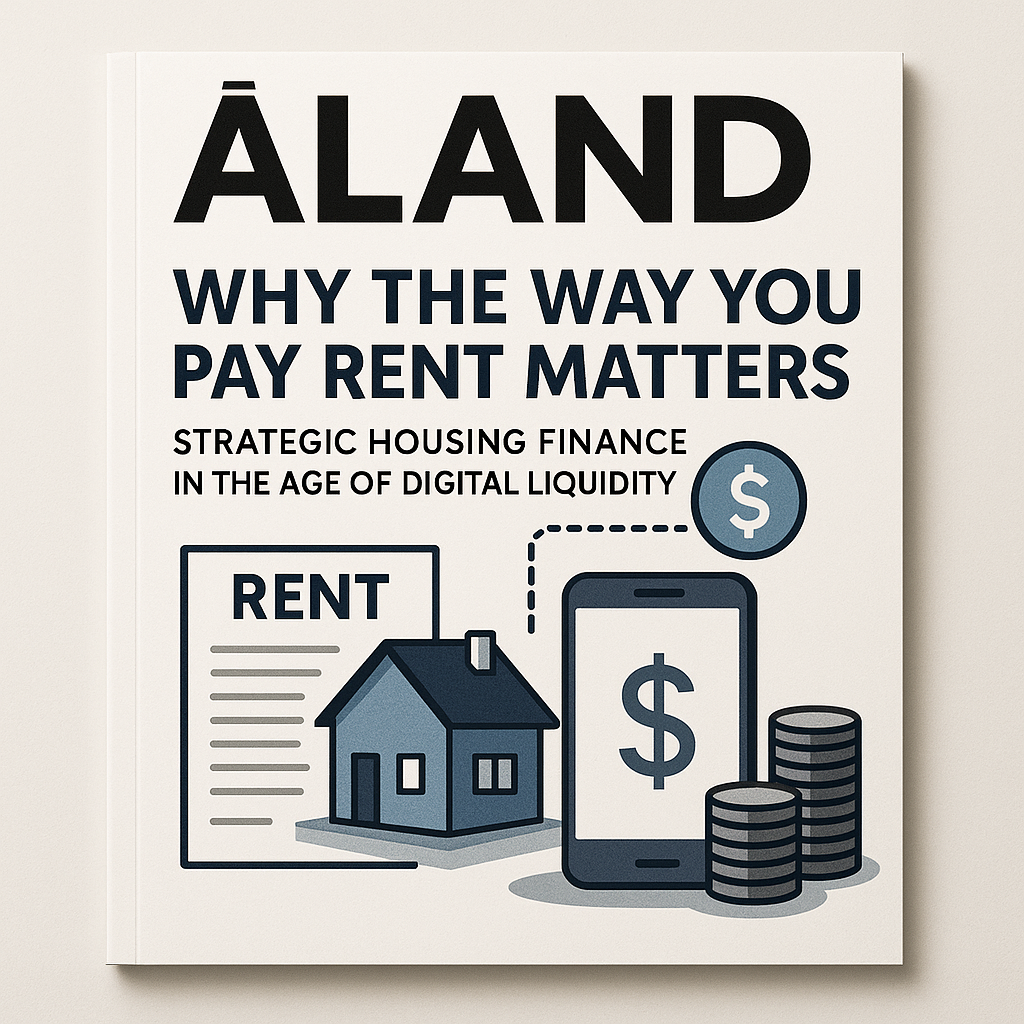Why the Way You Pay Rent Matters: Strategic Housing Finance in the Age of Digital Liquidity
- Published Date: 16th Jun, 2025
-
4.9★ ★ ★ ★ ★(86)

By Dr. Pooyan Ghamari, Swiss Economist and Founder of the ALand Platform
In an era defined by algorithmic markets, fluctuating liquidity, and rising housing costs in global megacities, the method by which one pays rent is no longer a banal administrative choice—it is a strategic financial decision. Just as the form of currency one holds reveals risk tolerance, rent payment models reflect both personal cash flow planning and broader economic paradigms.
Historically, rent has been a fixed monthly obligation—static, predictable, and straightforward. Today, with the rise of fintech platforms, tokenized housing models, and credit-based deferment systems, that paradigm has evolved. Professionals, CFOs, and digital nomads alike must now reframe rent not as a passive cost but as an active instrument in their liquidity arsenal.
This article explores how new rent models—ranging from “rent now, pay later” schemes to crypto-collateralized leases—interact with broader economic structures. It invites decision-makers and financial strategists to view housing through a dual lens: micro-level liquidity management and macro-level economic signaling.
The Evolution of Rent in High-Liquidity Economies
Urban housing markets in cities like Dubai, Singapore, London, and San Francisco are no longer driven purely by supply-demand equations. They are shaped by access to liquidity, alternative credit systems, and platform-based solutions that abstract the concept of “monthly rent” into dynamic financial flows.
For instance, in Dubai, rental contracts often range from one annual payment to flexible quarterly or monthly options. With the introduction of platforms like “Pay Rent with Credit,” tenants can now preserve cash flow while accruing rewards or investing their liquidity elsewhere. This behavior mirrors corporate treasury strategies—optimizing payment timing to preserve capital agility.
Such flexibility in rent payment transforms tenant behavior into a form of financial signaling. Choosing a credit-deferment model implies a strategic desire to unlock short-term capital—not an inability to pay, but a calculated move to use liquidity elsewhere. For analysts, this shift is a goldmine of behavioral data.
Rent as a Signal in Urban Economic Systems
Rent payment methods increasingly act as financial diagnostics. Much like yield curves or LIBOR rates hint at broader market sentiment, so too does rent behavior offer a real-time pulse of urban economic dynamics.
In Dubai, for instance, a shift toward monthly rent via credit lines is not merely about tenant convenience. It reflects three deeper macro signals:
-
Confidence in Short-Term Liquidity
-
Access to Credit Channels
-
Preference for Liquidity Leverage
From the lens of real estate investors, these patterns are predictive. A city with a growing population of renters opting for flexible, tech-enabled payment systems is not just evolving—it’s monetizing mobility. It signals an economy that values agility, fintech penetration, and the commodification of housing finance.
Housing as a Liquidity Platform
The rise of digital rent solutions transforms apartments into liquidity platforms. Rather than static domiciles, they become economic tools—sites where cash flow can be optimized, leveraged, and redirected.
Consider the implications of using rent deferment as an investment tool. A CFO managing a startup in a high-rent city like Singapore or Dubai might choose to defer rent via a “rent now, pay later” platform. The saved liquidity could fund working capital, marketing campaigns, or convertible debt placements. In this way, the rental property, though not owned, becomes an asset—not of equity, but of optionality.
Similarly, professionals leveraging credit-based rental payments can maintain investment positions in high-volatility markets while avoiding the capital lock-in of pre-paid rent. This behavior, when aggregated, affects not just personal portfolios but the very velocity of money within cities.
Rent Models and the Repricing of Financial Identity
Traditional credit scores fail to capture the modern financial complexity of renters in digitally advanced cities. Enter rent-as-data. Fintech platforms are now building alternative creditworthiness algorithms based on rent payment behaviors, tokenized transactions, and deferred liquidity models.
This evolution has two key consequences:
-
Decentralized Finance (DeFi) Integration
-
Cross-Border Financial Portability
For investors, this is an inflection point. Properties that support flexible payment models and are integrated into these fintech ecosystems will command premium valuations, especially from digitally native tenants and institutional buyers eyeing tokenized rent income.
Implications for Institutional Landlords and City Planners
City planners and institutional landlords must now reframe their understanding of rent—not as a monthly transaction, but as a liquidity instrument embedded in digital infrastructure.
Landlords that adopt flexible rent collection models, integrate with BNPL and credit APIs, and offer tokenized lease agreements are not just improving tenant satisfaction—they are future-proofing their portfolios. As cities compete for mobile professionals, digital-native millennials, and high-net-worth individuals seeking economic residency, the availability of flexible, tech-integrated housing becomes a geopolitical advantage.
About the Author
Dr. Pooyan Ghamari is a Swiss Economist, Global Thought Leader, and the Founder of the ALand Platform. With expertise spanning macroeconomics, real estate investments, and financial innovation, Dr. Ghamari’s work explores how digital liquidity, economic policy, and technological transformation intersect to shape the future of investment and urban development. Through the ALand Platform, he helps governments, institutions, and investors leverage real estate as a strategic asset in the age of decentralized finance and global digital migration.

